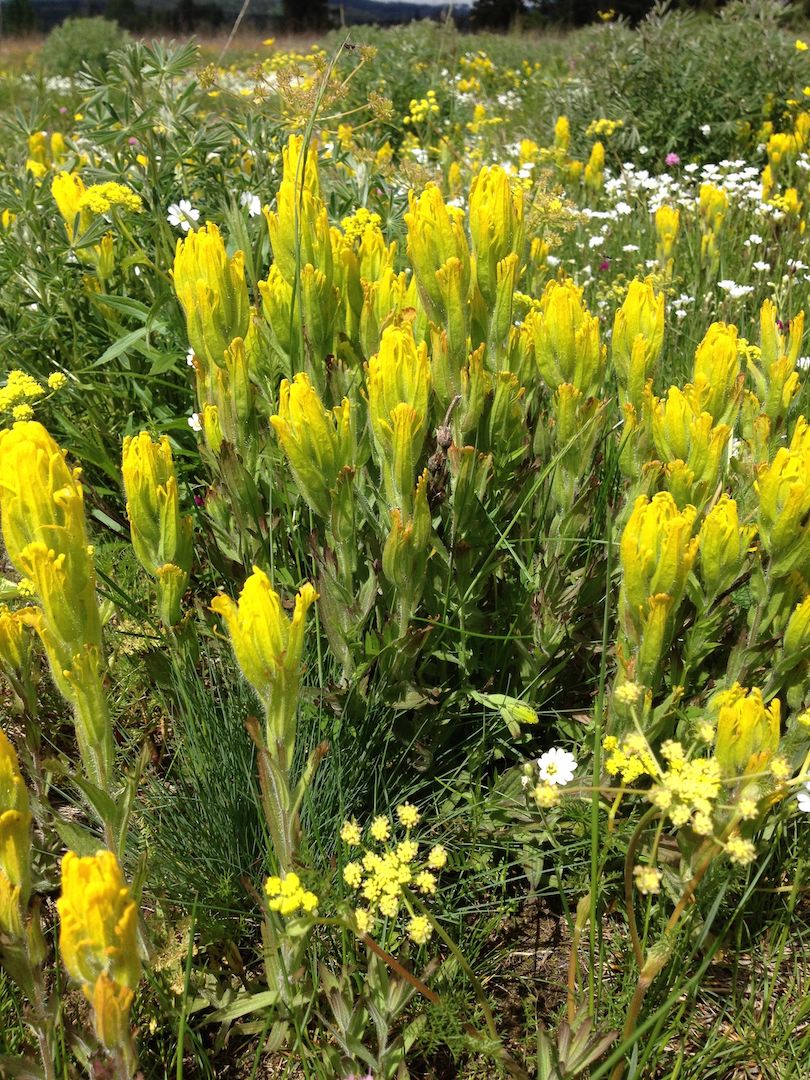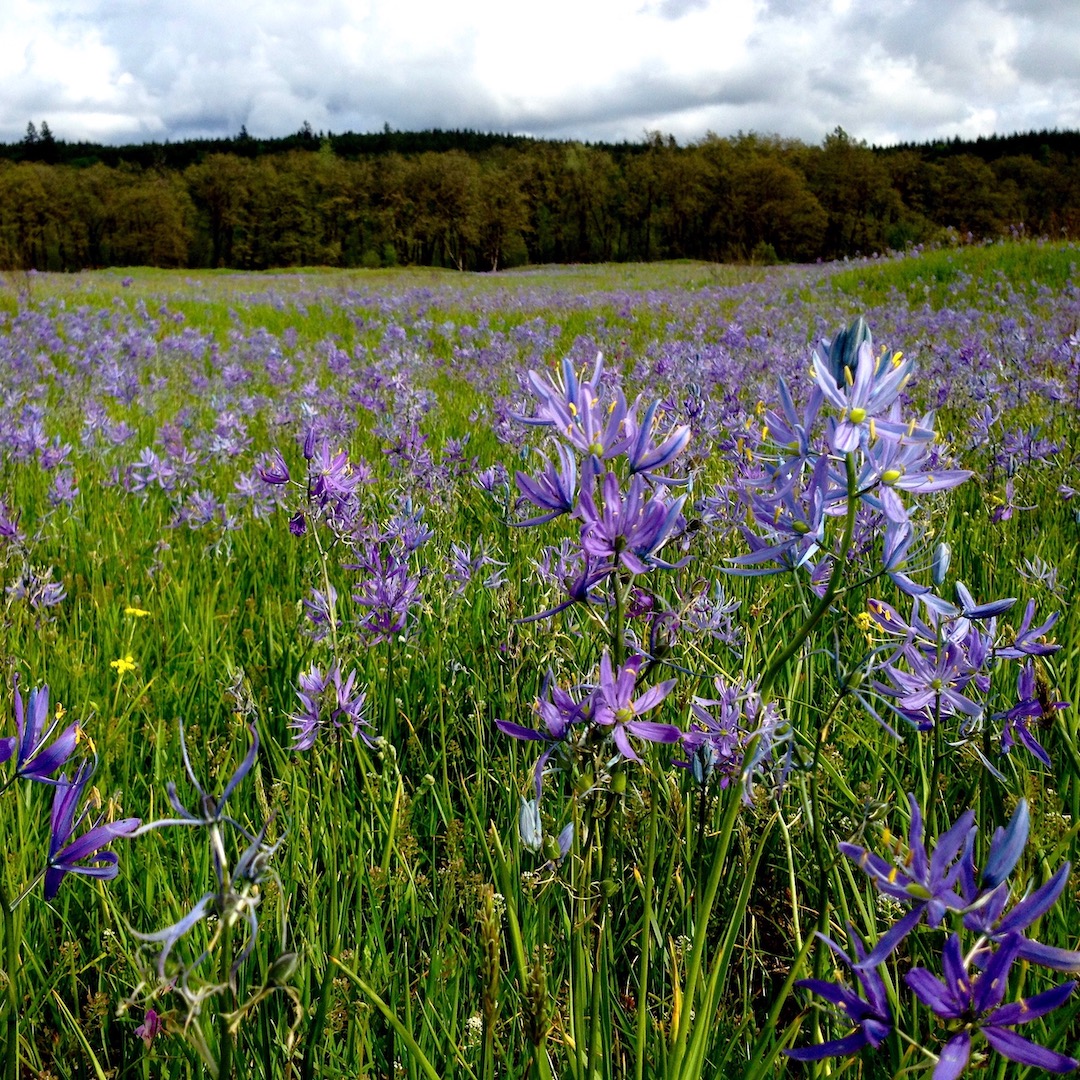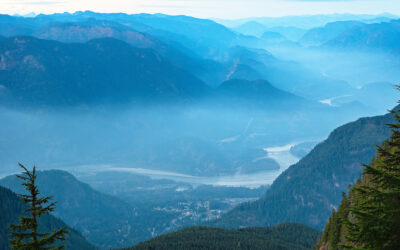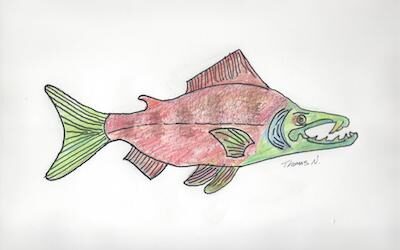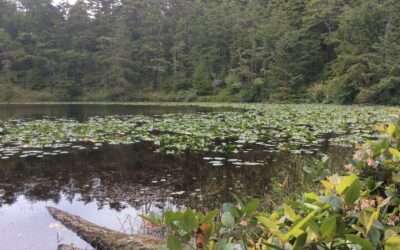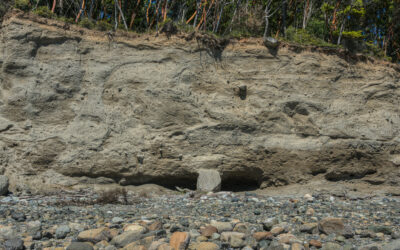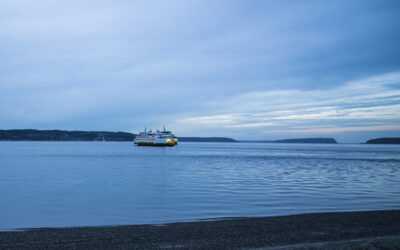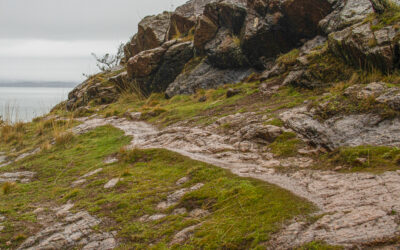BRINGING BACK THE RICHES OF THE PRAIRIES
by Sarah Hamman, Spring 2021
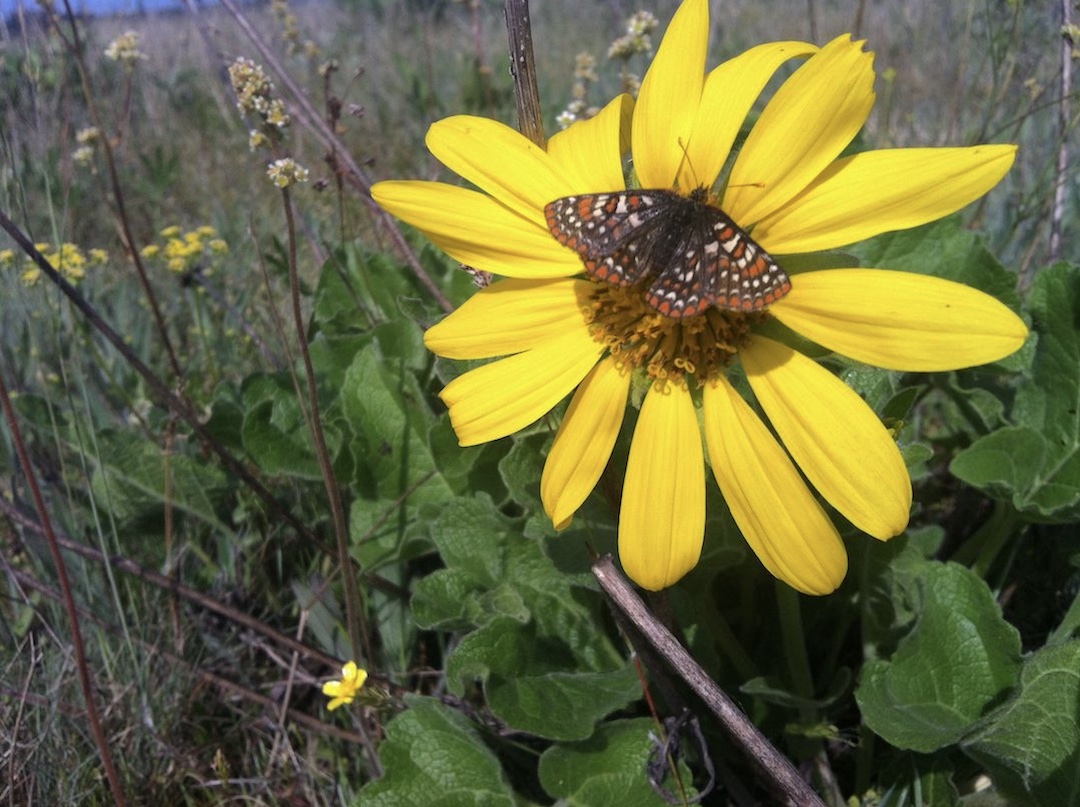
Taylor’s checkerspot butterfly visiting a balsamroot flower. Photo by Sarah Hamman.
BRINGING BACK THE RICHES OF THE PRAIRIES
by Sarah Hamman, Spring 2021
The geologic history of the Puget Lowlands is filled with drama — multiple glacial advances, glacial outburst floods, tectonic compression, and volcanic eruptions. It’s hard to imagine this violent history while watching butterflies flutter across a wildflower-filled prairie or hiking through a sun-speckled oak woodland. However, these beautiful, bucolic ecosystems were formed by the scraping, grinding, ragged retreat of the Puget Lobe of the Vashon Ice Sheet nearly 16,000 years ago. The glaciers left behind shallow, well-drained, low-nutrient glacial outwash soils throughout much of the Puget Lowlands. These soils fostered the growth of Puget Sound prairies and oak woodlands.
The glacial outwash soils are not ideal for forest growth, but Douglas-fir trees have been able to advance on the open prairie areas during cool, wet periods in the past. The regional footprint of the glacial outwash prairies has waxed and waned since the glacial retreat, due at times to shifting climates, and more recently (over the last several thousand years) due to human involvement.
A South Sound prairie blanketed in a spring carpet of common camas flowers. Photo by Mason McKinley
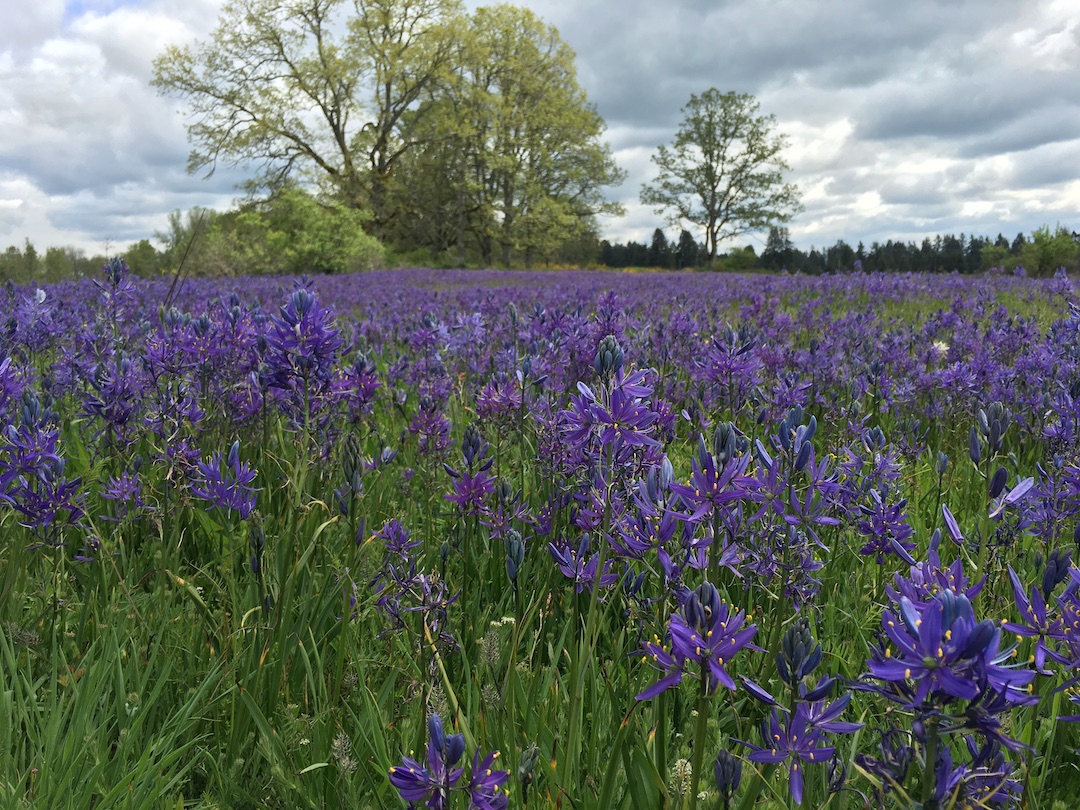
A South Sound prairie blanketed in a spring carpet of common camas flowers. Photo by Mason McKinley
Pacific Northwest prairies and oak woodlands were maintained by Coast Salish people for food and material resources through frequent surface burning and regular harvests. These actions sustained over 2.1 million acres of open prairie and woodland, dominated by common camas (Camassia quamash), Garry oak (Quercus garryana), and several hundred other native plants. Active indigenous stewardship of these ecosystems promoted not just the diversity of food plants but everything from the bees to the elk that depend on open prairie habitat.
Over the past 150 to 200 years, however, Puget Lowland prairies have been altered by a wide range of disturbances. The removal of indigenous people from prairie lands dramatically reduced the cultural and ecological benefits of traditional harvests and controlled burns. Fire exclusion led to invasion of non-native species, encroachment by shrubs and trees, deep thatch accumulations, and extensive moss cover. The introduction of row-crop agriculture and intensive grazing practices impacted vast acreages of prairie land, leading to introduced pasture grasses and changes in soil structure and nutrient content.
Urban and suburban development has increased the cover of impervious surfaces and non-native horticultural species across the prairies. The cumulative effect of these disturbances is a highly fragmented, invaded matrix of low-quality prairie lands, where only 3% of the intact, native prairie and oak woodlands still exist throughout their original range. Because of this, several prairie species are in decline, including the streaked horned lark (Eremophila alpestris strigata), Taylor’s checkerspot butterfly (Euphydryas editha taylori), Mazama pocket gopher (Thomomys mazama), and golden paintbrush (Castilleja levisecta), all of which have been federally listed as threatened or endangered.
Due to the rarity of prairies and the dramatic decline in native plant, invertebrate, bird, and mammal species, many federal, state, and local agencies, organizations, and Tribes have worked independently and together to prioritize prairie and oak woodland conservation and restoration. Collectively, managers have determined that the following primary goals drive restorative actions:
-
- Reduce the cover and influence of non-native, invasive species
- Build or restore a diverse, resilient native prairie community
- Provide the habitat needed by endangered species throughout their range
- Restore ecological and cultural processes that sustain these ecosystems (fire, traditional harvests, pollination, etc.).
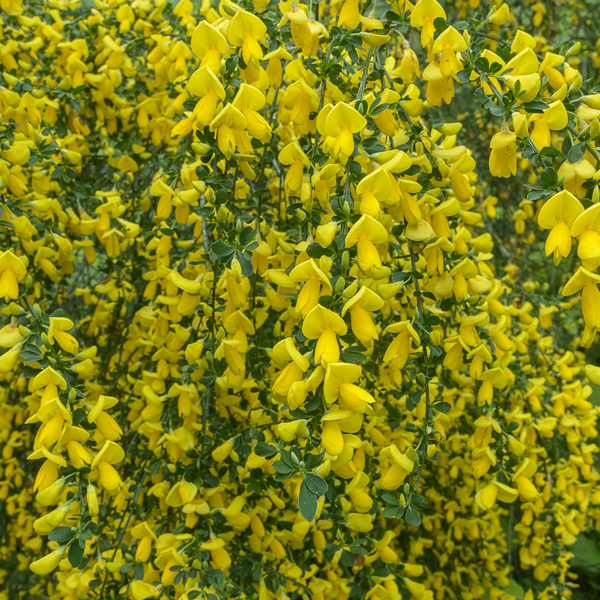
Scotch broom, a common non-native shrub that has invaded Puget Sound prairies. Photo by John F. Williams
Achieving diverse, resilient native prairie communities requires a complex set of restoration strategies. Each prairie site throughout the Puget Lowland area is a bit different, due to varying land use histories and current levels and types of disturbance. Some sites are covered by invasive Scotch broom (Cytisus scoparius) or Himalayan blackberry (Rubus armeniacus) or invasive pasture grasses, with just a few native plants remaining. A few have a wide variety of native grasses and wildflowers that bloom from April to July, providing a rich visual, olfactory, and auditory experience for spring visitors. With these diverse native prairies and woodlands as a sort of restoration target, managers throughout the region combine invasive removal methods (mowing, herbicide, hand-pulling), prescribed burning, and native seeding and planting to bring back some of the riches that previously existed across the prairies.
Each prairie restoration practice involves many years (sometimes decades) of learning, relearning, and fine-tuning to maximize efficiency and effectiveness. This requires close partnerships among local, state, and federal agencies, universities, Tribes, conservation districts, and nonprofit conservation organizations. It necessitates knowledge sharing among biologists, ecologists, educators, historians, cultural anthropologists, restorationists, and more. Hence, information to guide management comes from a variety of sources, including “traditional ecological knowledge,” results of annual monitoring efforts at restoration sites (“adaptive management”), and targeted experiments.
Traditional ecological knowledge provides invaluable information about the cultural priorities and practices that maintained this unique ecosystem for millennia. Incorporating these priorities and practices into current management through close partnerships with regional Tribes will help to revive and maintain the productivity of first foods and medicines (camas, biscuitroot, rice root, balsamroot, and many others) for the future.
Adaptive management helps us improve our restoration treatments bit by bit each year, learning as we go about the techniques that work and species that succeed. Scientific research can provide very specific guidance on the what-when-where-how-why details of various restoration tools; for example, the best season to use fire to promote habitat for ground-nesting birds, or effective soil fungal inoculants for improved flowering of butterfly nectar species. A combination of indigenous knowledge, adaptive management, and scientific research generates holistic knowledge about this unique ecosystem, with guidelines for restoration tailored to each species and site.
Through decades of hard work and learning, we are slowly gaining a better understanding and appreciation of the complex relationships and stewardship needs of the prairie and oak woodlands of the Puget Lowlands. By protecting, connecting, and restoring what remains of these unique ecosystems, we have an opportunity to get a glimpse of the past and create a sustainable future in which the prairies and their riches can endure.
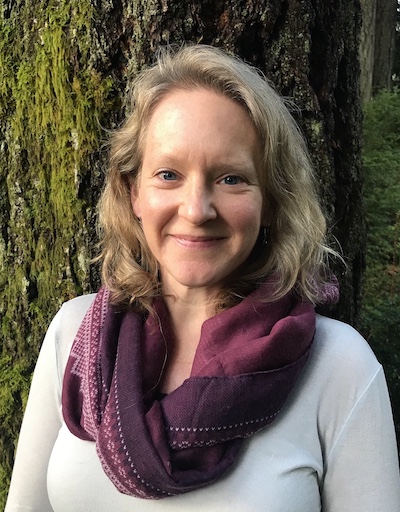
Sarah is the Director of Science for Ecostudies Institute (www.ecoinst.org), a conservation non-profit based in Washington State. Her work is aimed at researching and restoring rare species habitat in Pacific Northwest prairies and oak woodlands using rigorous science and collaborative conservation principles. She holds a B.A. in Biology from Wittenberg University and a Ph.D. in Ecology from Colorado State University. Sarah is also an adjunct professor at The Evergreen State College, where she teaches in the Master of Environmental Studies program.
Table of Contents, Issue #11, Spring 2021
Huge Ice Flood
by JOHN J. CLAGUE and NICHOLAS J. ROBERTS, Spring 2021The longest river in British Columbia twists through the Fraser Canyon and past the town of Hope. Photo by Michael A. Thornquist, Seaside Signs.The longest river in British Columbia twists through the Fraser Canyon...
WA Megafauna
by Thomas Noland, Spring 2021 Photos by Thomas Noland at the Burke Museum in Seattleby Thomas Noland, Spring 2021 Photos by Thomas Noland at the Burke Museum in SeattleWe’ve been lucky to find remnants of really big creatures from the past here in Washington. Not...
Whidbey Island Kettles
by Sadie Bailey, Spring 2021 Photos & video by Tom Noland except as notedby Sadie Bailey, Spring 2021 Photos & video by Tom Noland except as noted I have always loved cloudy days. The kind of days where the grey takes over the color of the world. Where the...
Poetry-11
Spring 2021 Photos by John F. WilliamsSpring 2021 Photos by John F. WilliamsShe feels the heat by Janet Knox From deep below groundDegrees add degrees the deeperHeat of exhaust bodies degassingIn cars like coffins the heat of ageDone with pregnant possibilityHer body...
Our Icy Past
by Nancy Sefton, Spring 2021 Photos by John F. Williamsby Nancy Sefton, Spring 2021 Photos by John F. WilliamsFerries are an integral part of today’s Salish Sea region. But thousands of years ago, you could have simply walked across the Salish Sea, that is, if you...
Language of Glaciers
by Chrys Bertolotto, Spring 2021 Photo by Tom Nolandby Chrys Bertolotto, Spring 2021 Photo by Tom NolandGlaciers are such immensely powerful rivers of ice that they shape landscapes in their path. They have done this to such a degree that new words needed to be...
Videos-11
Spring 2021 Photo by Cookie the Pom on UnsplashSpring 2021 Photo by Cookie the Pom on UnsplashYes, that's Videos-11, not Oceans Eleven. These are some videos that illustrate some of the ideas discussed in the articles and poems in Salish Magazine issue number 11....
PLEASE HELP SUPPORT
SALISH MAGAZINE
DONATE
Salish Magazine contains no advertising and is free. Your donation is one big way you can help us inspire people with stories about things that they can see outdoors in our Salish Sea region.
We also don't advertise Salish Magazine, so please spread the word of this online resource to your friends and colleagues.
Thanks so much for your interest and your support.
We also don't advertise Salish Magazine, so please spread the word of this online resource to your friends and colleagues.
Thanks so much for your interest and your support.

